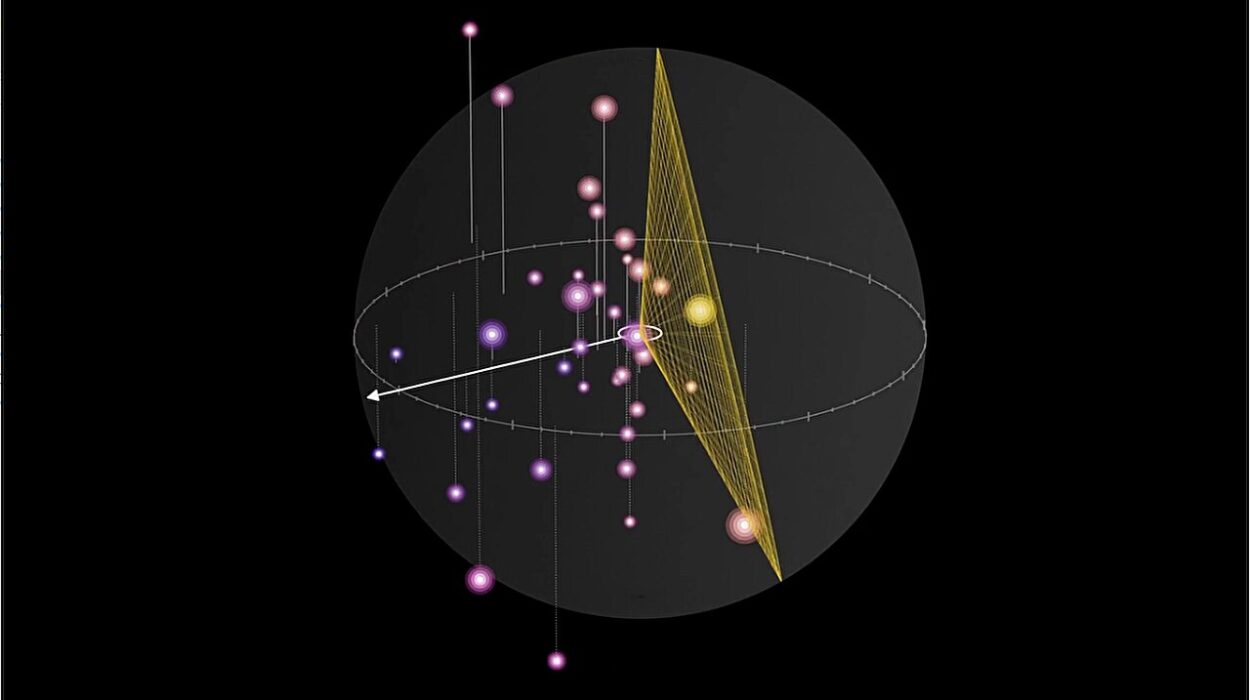Before we enter the world of chronic and acute illnesses, it’s worth pausing to consider the word “illness” itself. In every language, every culture, illness is not just biological—it’s emotional, societal, existential. It disrupts routines, rewrites futures, and challenges our sense of control. We spend much of our lives in pursuit of health, yet few of us are prepared to truly understand the nature of its absence.
Understanding illness isn’t just for doctors. It’s for anyone who has ever taken care of a sick child, worried over an aging parent, battled their own diagnosis, or simply wondered what separates a fleeting cold from a lifelong condition. The distinction between chronic and acute illness is one of the most fundamental in medicine—and one of the most misunderstood. This isn’t just about vocabulary; it’s about how we experience time, resilience, and vulnerability in the context of our health.
Two Roads Diverged in the Body: Acute vs. Chronic
When illness strikes, it tends to arrive in one of two forms: like a bolt from the blue or a slow, creeping shadow. Acute illnesses are sudden, often dramatic, and typically short-lived. They burn bright and fast—think of appendicitis, the flu, or a broken bone. These are the medical equivalents of thunderstorms. They roll in, bring chaos, and then, ideally, pass.
Chronic illnesses, by contrast, are the long winters. They unfold over months, years, or even lifetimes. Conditions like diabetes, hypertension, arthritis, and depression do not simply arrive and depart; they settle in. They require ongoing management, adaptation, and—sometimes—the redefinition of daily life.
The medical community defines acute illnesses as those with rapid onset and limited duration. Chronic illnesses, on the other hand, are typically defined by persistence—usually lasting three months or more—and often cannot be cured, only controlled. But these definitions, while clinically useful, barely scratch the surface of what these illnesses mean for patients.
The Acute Experience: A Sudden Interruption
Acute illness often feels like an ambush. One day you’re fine, and the next, you’re doubled over in pain, burning with fever, or suddenly unable to breathe. The body’s descent can be shockingly fast. This immediacy has one advantage: it demands and often receives prompt attention. The very dramatic nature of acute conditions propels people into the healthcare system—into emergency rooms, urgent care clinics, operating rooms.
Treatment tends to be decisive: antibiotics, surgeries, splints, or short-term medications. There’s often a clear endpoint. You take the meds, rest, and eventually return to your previous baseline of health. In this way, acute illness functions like a narrative arc—it has a beginning, middle, and end.
But not all acute illnesses are harmless or easily resolved. A stroke or heart attack is technically acute, yet its consequences can last a lifetime. These “acute-onset, chronic-impact” conditions blur the lines, revealing that even a single moment of illness can alter the trajectory of a person’s health forever.
The Chronic Experience: A Life Rewritten
If acute illness is a sprint, chronic illness is a marathon—and not the kind anyone volunteers for. It’s one thing to face an illness that will eventually pass. It’s another to wake up each day knowing it never will. The chronic experience is defined not by dramatic events but by accumulation—of symptoms, appointments, medications, frustrations, and small victories.
Chronic illness doesn’t shout; it whispers. It might begin with fatigue, a dull ache, or a quiet shortness of breath. It may be misdiagnosed or dismissed for months or even years. When the diagnosis finally comes, it is often less of a thunderclap than a slow realization that life has fundamentally changed.
There is no “before and after” with chronic illness—only the ongoing “now.” Management becomes the goal: controlling blood sugar levels, preventing flare-ups, maintaining lung function. Patients become experts in their own bodies, tracking patterns and anticipating shifts. For many, the most exhausting part isn’t the disease itself—it’s the constancy.
Emotionally, chronic illness is a psychological landscape of adjustment. Denial gives way to anger, then bargaining, then, perhaps, acceptance. But acceptance is not resignation—it’s adaptation. It’s finding ways to live meaningfully within the boundaries imposed by the illness, rather than trying to live as though those boundaries don’t exist.
Biology Behind the Labels: What Drives the Difference
The body doesn’t speak in English, but it does have a language—biochemical, cellular, molecular. And in this language, chronic and acute illnesses differ not just in presentation but in mechanism.
Acute illnesses are often the result of an external invader or trauma. Viruses, bacteria, toxins, or injuries trigger an immediate immune response. The body mobilizes its defenses—white blood cells surge, inflammatory cytokines are released, fevers rise. This response, though uncomfortable, is highly effective. It is a contained war.
Chronic illnesses, however, are often more insidious. Sometimes they result from the immune system going rogue, as in autoimmune diseases like lupus or multiple sclerosis. Other times, they stem from slow, systemic imbalances—like the insulin resistance that underlies type 2 diabetes. Genetics, environment, lifestyle—all play a role. And in many chronic conditions, the body’s own attempts to protect itself end up causing harm.
Inflammation, for instance, is a friend during acute illness. It helps isolate and destroy pathogens. But in chronic illness, it can become a villain. Chronic inflammation quietly erodes tissues, damages blood vessels, and alters metabolism. It’s the biological equivalent of a smoldering fire—less obvious than a blaze, but capable of just as much destruction.
The Emotional Toll: Time as a Factor of Suffering
Acute illness often evokes fear, but that fear is sharpened by urgency. There is a sense of crisis, but also a sense of purpose—something is wrong, and it must be fixed. Once it is, the crisis ends. Recovery may be slow, but it is usually finite.
Chronic illness, by contrast, involves a subtler form of suffering. It’s not just the symptoms—it’s the slow erosion of identity. Patients often struggle with the invisibility of their conditions. Friends may not understand why they cancel plans or seem exhausted after minor exertion. Employers may misread accommodations as laziness.
There’s also the loss of spontaneity. Life becomes scheduled around medications, doctor’s visits, energy levels. For young adults, it can mean watching peers pursue careers, relationships, and adventures while they manage symptoms and side effects. For older adults, it can mean adjusting to dependence or mourning lost abilities.
And yet, within this space, resilience blooms. Chronic illness often fosters communities—both in-person and online—where patients support one another with a depth of empathy rarely found elsewhere. These communities become lifelines, and the wisdom shared within them is profound.
Healthcare Systems: How We Treat the Temporary vs. the Ongoing
Modern medicine is well-equipped for acute care. Hospitals are designed for emergencies. Protocols are in place for strokes, sepsis, trauma. Resources are mobilized quickly, and treatment is often high-tech and intensive. The acute model of care is like a fire department—geared toward crisis response.
Chronic care, however, doesn’t fit neatly into this model. It requires long-term planning, coordinated teams, patient education, and consistent follow-up. And in many healthcare systems, particularly those geared toward episodic treatment, chronic care falls through the cracks.
The result is fragmentation. A patient with diabetes may see an endocrinologist for blood sugar, a cardiologist for hypertension, a podiatrist for foot ulcers, and a psychiatrist for depression—each working in isolation. Medications may conflict. Advice may differ. And the patient is left to connect the dots.
The ideal approach is integrated care—teams that communicate, patient-centered plans, and an emphasis on prevention and lifestyle. But achieving this requires not just changes in healthcare systems, but also shifts in how society views and values chronic care.
The Overlap and the Gray Zones
Real life rarely conforms to neat categories. Many illnesses begin acutely but become chronic. An infection may damage organs and result in long-term dysfunction. Cancer is often diagnosed after a sudden symptom but requires ongoing treatment and monitoring. Mental illnesses like major depression can be episodic—acute in crisis but chronic in recurrence.
There’s also the phenomenon of “chronic acute” conditions—illnesses marked by long periods of stability punctuated by acute flare-ups. Asthma, multiple sclerosis, Crohn’s disease: these diseases can lurk quietly and then roar back, demanding immediate intervention.
This gray zone reveals the artificiality of our categories. What really matters is not the label, but the impact on the person’s life—and how we respond to it.
Cultural and Societal Dimensions
How we perceive illness is shaped not just by biology but by culture. In many societies, acute illness is seen as more legitimate because it is visible, dramatic, and often treatable. Chronic illness, especially when invisible, is more likely to be stigmatized or misunderstood.
This has real consequences. Funding often skews toward acute interventions—emergency surgeries, new antibiotics—while chronic illness management, mental health, and preventive care receive less attention. Insurance models may prioritize short-term outcomes over long-term support.
Even language reflects this bias. We say someone is “battling cancer” but “suffering from arthritis.” One implies action and courage; the other, passivity. Yet both patients may be fighting equally hard.
Shifting this narrative is crucial. Chronic illness demands just as much bravery—sometimes more—because the battle is not one of days but of years.
Living With, Not Against
Perhaps the most radical rethinking of illness comes not from medicine, but from philosophy and patient advocacy. For generations, we have been taught to fight illness, to “beat” it, to return to “normal.” But chronic illness forces us to question what normal means. It invites us to think not about overcoming but about integrating.
Many patients speak of their condition as a teacher—not in some trite, inspirational way, but as a profound shift in how they relate to their bodies, their time, and their priorities. Chronic illness can pare life down to its essentials. It can teach presence, humility, and compassion. This isn’t romanticizing suffering. It’s recognizing that within suffering, there can also be growth.
This shift from opposition to coexistence is one of the most powerful changes in how we approach illness. It allows room for adaptation, for acceptance, and for peace.
The Future of Illness: Personalized, Preventive, Proactive
The 21st century is poised to revolutionize how we think about both acute and chronic illnesses. Advances in genomics, wearable technology, and artificial intelligence are blurring the lines between diagnosis and prevention. We can now monitor blood glucose levels continuously, detect atrial fibrillation before it causes a stroke, and use machine learning to identify patterns that predict flare-ups.
Chronic illness management is also becoming more holistic. We’re learning that lifestyle factors—diet, exercise, sleep, stress—play a massive role in disease progression. Functional medicine, integrative medicine, and patient-centered care are gaining traction.
At the same time, the acute care world is evolving. Rapid diagnostics, telemedicine, and portable imaging are allowing faster responses and better outcomes. But perhaps the biggest change will come from dissolving the rigid divide between acute and chronic—and building systems that address the full spectrum of health over a lifetime.
Conclusion: The Time of the Body
When we speak of acute and chronic, we are ultimately speaking of time—not just how long an illness lasts, but how it unfolds in the life of the person living it. Time, in this context, is not just a measurement. It’s an experience. Acute illness fractures time. Chronic illness stretches it. Both change it.
Understanding the difference between chronic and acute illness is more than a clinical exercise. It is a lens through which we can see how the body navigates the world—how it breaks, heals, adapts, and endures. And perhaps more importantly, it is a way to understand each other. Because sooner or later, we all become patients—not just of medicine, but of time itself.






